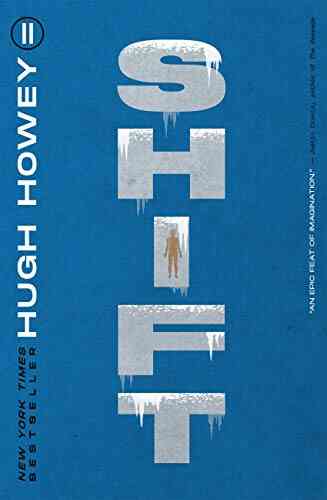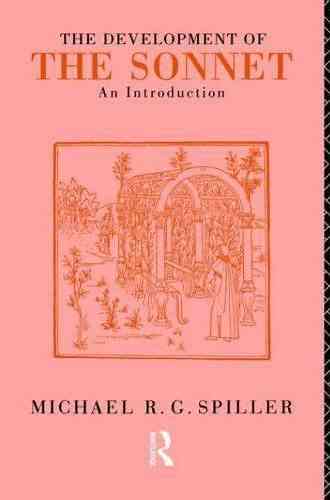The Development Of The Sonnet: An Introduction to the Evolution of a Poetic Form

There is something uniquely captivating about the sonnet - a succinct yet powerful poetic form that has endured through centuries of literary history. From its origins in fourteenth-century Italy to its various adaptations in different languages and cultures, the sonnet has evolved and grown, captivating the hearts and minds of poets and readers alike. In this article, we will delve into the development of the sonnet, exploring its historical context, key figures, and the impact it has had on the world of literature.
The Origins: Petrarch and the Italian Sonnet
The story of the sonnet begins with the Italian poet Francesco Petrarch, who is often considered the father of the form. In the fourteenth century, Petrarch crafted a series of poems addressed to an idealized woman named Laura. These sonnets, known as "Canzoniere" or "Rime sparse," captivated readers with their passionate expression of unrequited love and longing. Petrarch's sonnets consisted of fourteen lines, divided into an octave (eight lines) and a sestet (six lines),following the rhyme scheme ABBAABBA CDECDE or CDCDCD.
Petrarch's sonnets not only explored themes of love and desire but also reflected the broader cultural context of the time. The Renaissance, with its focus on humanism and the individual, provided an ideal setting for the sonnet to thrive. The combination of Petrarch's profound emotional depth and the evolving social and intellectual landscapes of Italy sparked an unparalleled interest in the sonnet form among other poets.
4.5 out of 5
| Language | : | English |
| File size | : | 507 KB |
| Text-to-Speech | : | Enabled |
| Screen Reader | : | Supported |
| Enhanced typesetting | : | Enabled |
| Print length | : | 256 pages |
The Evolution: Shakespeare's Sonnet Sequence
While Petrarch introduced the sonnet to the world, it was William Shakespeare who perfected and popularized it in English literature. Shakespeare's sonnets, published in 1609, presented a collection of 154 poems that showcased the range and versatility of the form.
Shakespeare's sonnets deviated from the Italian model by utilizing a different rhyme scheme. Instead of the Petrarchan ABBAABBA CDECDE or CDCDCD, Shakespeare adopted the English sonnet form, which consists of three quatrains (four lines each) and a concluding couplet (two lines). The rhyme scheme became known as ABAB CDCD EFEF GG. Through his sonnets, Shakespeare explored themes of love, time, beauty, and mortality, captivating readers with his masterful language and deep emotional resonance.
Shakespeare's sonnet sequence stands as a testament to the enduring power of the form. His ability to encapsulate complex emotions and timeless truths in just fourteen lines has influenced poets for generations to come.
The Sonnet Across Cultures: Diverse Adaptations
As the sonnet spread beyond Italy and England, it underwent adaptations and transformations to suit different languages, cultures, and artistic sensibilities. In France, the sonnet took on a more rigid structure, known as the "Petrarchan sonnet." This form retained the fourteen-line structure but employed a rhyme scheme of ABBA ABBA CDC DCD.
In the German-speaking world, the sonnet developed its own distinct style, known as the "Gedichte" or "gebrochener Reim." This form utilized a greater degree of variation in rhyme scheme and structure, reflecting the linguistic nuances of the German language.
Throughout history, poets from around the world have experimented with the sonnet, making it a truly global form. From the Elizabethan era to the Harlem Renaissance, from the works of Pablo Neruda to contemporary sonneteers, the sonnet continues to evolve and adapt, embracing new themes and perspectives to stay relevant in an ever-changing world.
The Influence and Legacy of the Sonnet
The sonnet's impact on the world of literature cannot be overstated. Its concise structure and lyrical quality have made it a favorite form for poets across different eras and cultures. Through the sonnet, poets have explored a myriad of human experiences, delving into love, loss, nature, politics, and philosophy.
The strict constraints of the sonnet form, combined with its emotional intensity, challenge poets to distill their thoughts into a concise but impactful expression. By manipulating meter, rhyme, and structure, poets have found freedom within these constraints, pushing the boundaries of the form while still adhering to its fundamental principles. This delicate balance between structure and creativity is what makes the sonnet a timeless and versatile form of poetic expression.
Furthermore, the sonnet has had a profound influence on other art forms, such as music and theater. Composers like Franz Schubert and Benjamin Britten have set sonnets to music, capturing the essence of the poems in melodic form. In the realm of theater, Shakespeare's sonnets have inspired countless plays and dramatic performances, showcasing the powerful synergy between poetry and performance.
The sonnet, born out of a passionate exploration of emotions and human experience, has blossomed into a versatile form that continues to captivate readers and inspire poets worldwide. From the works of Petrarch and Shakespeare to the adaptations and experiments across cultures, the sonnet has proven its enduring appeal and adaptability.
As we dive deeper into the world of poetry, it is crucial to appreciate the evolution of the sonnet and its impact on literary history. Through its concise and structured yet emotionally rich nature, the sonnet invites both poets and readers to explore the vast depths of human existence, making it an indispensable part of the poetic landscape.
So, the next time you encounter a sonnet, take a moment to marvel at its intricate beauty, its elegant structure, and the profound emotions it encapsulates. For within those fourteen lines lies a world of poetic brilliance waiting to be explored.
4.5 out of 5
| Language | : | English |
| File size | : | 507 KB |
| Text-to-Speech | : | Enabled |
| Screen Reader | : | Supported |
| Enhanced typesetting | : | Enabled |
| Print length | : | 256 pages |
First published in 1992. Routledge is an imprint of Taylor & Francis, an informa company.
Do you want to contribute by writing guest posts on this blog?
Please contact us and send us a resume of previous articles that you have written.




















Light bulbAdvertise smarter! Our strategic ad space ensures maximum exposure. Reserve your spot today!

 Elias MitchellBest Friend Little Sister Enemies To Lovers Romance - A Captivating Journey...
Elias MitchellBest Friend Little Sister Enemies To Lovers Romance - A Captivating Journey... Jerome BlairFollow ·3.8k
Jerome BlairFollow ·3.8k Chase MorrisFollow ·11.5k
Chase MorrisFollow ·11.5k Patrick HayesFollow ·15.8k
Patrick HayesFollow ·15.8k Alexander BlairFollow ·19.6k
Alexander BlairFollow ·19.6k Victor TurnerFollow ·9.8k
Victor TurnerFollow ·9.8k Sam CarterFollow ·14.9k
Sam CarterFollow ·14.9k Rodney ParkerFollow ·15.5k
Rodney ParkerFollow ·15.5k Bryce FosterFollow ·10.6k
Bryce FosterFollow ·10.6k

 Gage Hayes
Gage HayesUnveiling the Mysterious Terminus Peter Clines - A Master...
In the realm of...

 Andrew Bell
Andrew BellThe Touch Of Death: An Ennin Mystery 17 - Delve into the...
Japanese detective fiction has captivated...

 Damon Hayes
Damon HayesThe Thrilling World of Airborne: Tom Clancy Military...
When it comes to military novels, few authors...

 Steve Carter
Steve CarterThe Artist Way 25th Anniversary Edition: Ignite Your...
Do you feel a burning desire to express...

 Eugene Scott
Eugene ScottTop 10 Websites Offering Lucrative Side Jobs For Those...
Welcome to the world of freelance work and...

 Evan Hayes
Evan HayesThe Ultimate Black Girls Guide To Skin Care: Achieving...
For women of color, especially...

 Hank Mitchell
Hank MitchellMarried To The Alien Doctor Renascence Alliance: A Love...
Have you ever fantasized about what it...

 Brenton Cox
Brenton CoxDiscover the Enchanting World of My Surly Heart Poems by...
Have you ever been captivated by the...

 Chuck Mitchell
Chuck MitchellFrom Storm And Shadow Part Stormfae: A Thrilling Tale of...
HTML Format: Prepare yourself to...

 Deacon Bell
Deacon BellThe Extraordinary Story of Richard Sharpe And The...
In the annals of military history, few men...

 Devon Mitchell
Devon MitchellShift Silo Trilogy - A Captivating Journey into Hugh...
When it comes to...

 Gene Simmons
Gene SimmonsSnake IV Original Grace Gary Lemons
Snakes are fascinating...
4.5 out of 5
| Language | : | English |
| File size | : | 507 KB |
| Text-to-Speech | : | Enabled |
| Screen Reader | : | Supported |
| Enhanced typesetting | : | Enabled |
| Print length | : | 256 pages |




















